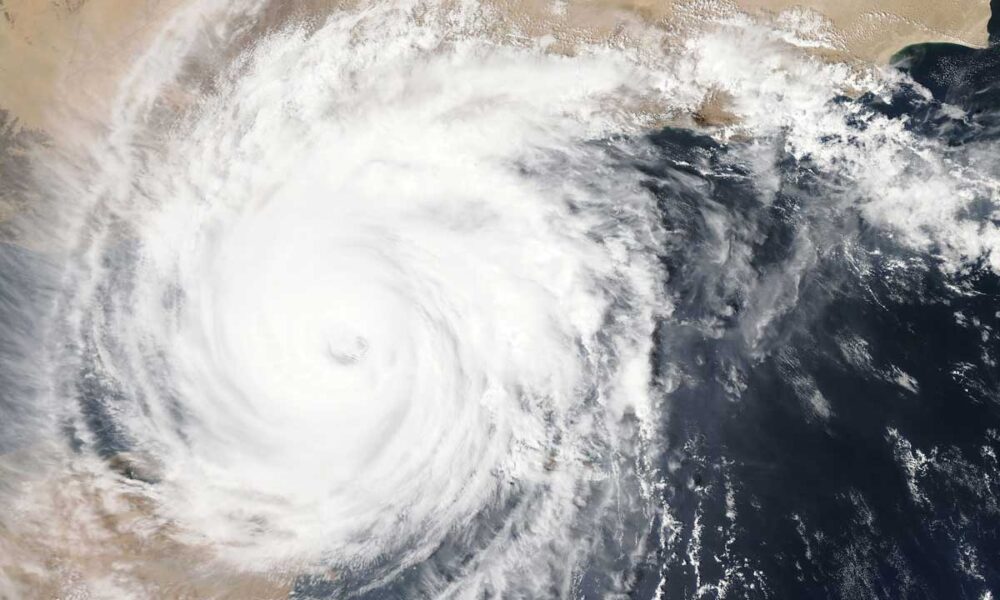BUSINESS & ECONOMY
Summer of Discontent: Extreme Weather Events Kill
Published
2 years agoon
By
Editor
It’s a fact: media shapes the public discourse about climate change and how to respond to it. Even the UN’s own Intergovernmental Panel of Experts on Climate Change (IPCC) warned clearly of this for the first time in the latest of its landmark series of reports.According to the IPCC, this “shaping” power can usefully build public support to accelerate climate mitigation – the efforts to reduce or prevent the emission of the greenhouse gases that are heating our planet – but it can also be used to do exactly the opposite.
This places a huge responsibility on media companies and journalists.
The Panel also noted that global media coverage of climate-related stories, across a study of 59 countries, has been growing; from about 47,000 articles in 2016-17 to about 87,000 in 2020-21.
Generally, the media representation of climate science has increased and become more accurate over time, but “on occasion, the propagation of scientifically misleading information by organized counter-movements has fuelled polarization, with negative implications for climate policy”, IPCC experts explain.
Moreover, media professionals have at times drawn on the norm of representing “both sides of a controversy”, bearing the risk of a disproportionate representation of scepticism on the scientifically proven fact that humans contribute to climate change.
So how can journalists be a force for good amid these challenges and what UN Secretary-General António Guterres has deemed a ‘current climate emergency’?
UN News spoke with Andrew Revkin, one of the most honoured and experienced environmental journalists in the United States, and the founding director of the new Initiative on Communication and Sustainability at Columbia University’s Earth Institute.
Mr. Revkin has been writing about climate change for decades, even before the IPCC was created 30 years ago, for renowned media organizations such as The New York Times, National Geographic and Discover Magazine. He has also participated in events led by the UN Environmental Programme, the UN Office of Disaster Risk Reduction, UN-Habitat and other UN agencies.
Drawing on Mr. Revkin’s broad experience, and the expertise of UNESCO and the IPCC, here are five ways in which journalism can support climate action and fight misinformation.
1. Stop being so (overly) dramatic
As climate change takes hold, people are increasingly demanding information about what is happening, and also about what they and their governments can do about it.
According to UNESCO, three of the media’s traditional roles – informing audiences, acting as watchdogs, and campaigning on social issues – are especially relevant in the context of a changing climate.
Mr. Revkin explains that journalists are attracted to voices that are out in the landscape, and “subservient” to how the story is being framed, whether it is by the UN Secretary-General, or by activists blockading a street in London or New York.
“I’ve been on the Greenland ice sheet. I’ve written hundreds of stories about sea level. The range of sea level rise by 2100 is still kind of where it was when I wrote my first story [for Discovery Magazine] back in 1988. So, when you put all that together, we end up conveying unfortunately more of a problem story to the public”, he says.
The journalist adds that modern media also tries to get people’s attention amid a lot of competing priorities, and there is a “tendency” to latch onto the dramatic angle.
“I run a programme where I’m trying to, among other things, get people to stop and think about the words they use. When you use the word “collapse” to talk about a glacier, are you thinking in the many centuries timescale that the scientists are thinking, or are you thinking about collapse like when the World Trade Centre [towers] fell? It’s really important to be clearer when we choose words and how they might convey a false impression,” he underscores.
According to UNESCO, and studies carried out by the Thomson Reuters Institute, the “doom and gloom” narrative can also make some people simply “turn off” and lose interest.
“[The dramatic angle] will get you the clicks. But one thing I say a lot these days is if clicks are the metric of success in environmental journalism, then, we’re kind of doomed because what you really want is to build an engaged back and forth with readers and with experts so that you as a medium, or journalist of a media company, become a kind of trusted guide,” Mr. Revkin highlights.
2. A climate change story goes beyond (the) climate
Part of getting away from the doom and gloom and inspiring that engagement with readers and science experts is to realize that climate change is not just “a story”, but the context in which so many other stories will unfold.
“If you start your day thinking about questions like ‘how do I reduce climate and energy risk?’, ‘how do I define it and help communities grapple with that?’ then it really changes everything. Because I could keep writing stories warning how global warming is [progressing] or how this is going to be the 4th hottest year in history, and that is part of what journalism does, but it doesn’t move us anywhere towards risk reduction,” Mr. Revkin argues.
He says that taking a more contextual approach can also create space for stories that might go unreported otherwise.
“It’s about creating a pathway for impact. Sometimes the output won’t be a story, but it could be a tool. For example, a [savings] calculator.”
As an example, the journalist cites an online calculator created by an American NGO called Rewiring America. By inputting a few personal details, individuals can learn how much money they may be eligible for under the Inflation Reduction Act (a recent Congressional legislation that reportedly sets up the largest investment in combating climate change in US history) by switching to cleaner energy options.
“Do you know as a person in Ohio, what the benefits of this new climate legislation will be for you? How easy could you transition your home to solar or think about getting an electric vehicle? And you know, what will be the benefits? That’s the kind of thing [it will show] and could be just as true anywhere in the world,” he highlights.
The calculator does not mention climate change on its website, but it motivates users to switch to cleaner energy because of the benefits they might get.
“In the case of developing countries, the most important new information to convey is about risk, environmental risk, flood risk and also energy opportunities. And this is very different from the way journalism operated when I was a lot younger,” Mr. Revkin explains.
Indeed, in a handbook for journalists, UNESCO states that contrary to popular belief, climate is an issue full of knock-on concerns that can sell newspapers and attract new audiences online, in print and on the airwaves; journalists don’t really need to put ‘climate’ in their headlines to tell good climate change stories.
3. ‘Get local’ and think more about climate justice
The IPCC scientists have also recognized how “explicit” attention to equity and justice is important for both social acceptance and fair and effective legislation to respond to climate change.
By analysing local contexts and social factors, journalists can also create stories related to climate justice.
“Energy risk is not just about stopping fossil fuels if you are in a developing country that hasn’t contributed any greenhouse emissions at all, if you are living a life of 0.1 tons of CO2 per year in rural Rwanda… So, anyone who’s writing simplistic stories about fossil fuel use is missing [the point that] that energy vulnerability matters too,” Mr. Revkin says.
He also gives as an example the Durban floods and landslides in South Africa earlier this year that left nearly 450 dead and displaced some 40,000. A local geographer, Catherine Sutherland, studied the areas where people had drowned and where the worst damage had occurred.
“That problem [was about so much more than] climate. It was about vulnerability created by racial and poverty drivers. Where do you live when you have no money and no power? You live in the places where no one else will live because they know they’re going to get flooded. So that’s the story. That’s where the whole idea of climate justice comes from. It’s too simplistic to say it’s just about fossil fuels,” the journalist adds.
Mr. Revkin underscores that energy decisions and climate vulnerability are largely a function of local conditions, which means they are a “very important part of the story”.
“For example, the World Weather Attribution Project has been doing a rapid analysis of how much global warming contributed to the recent disaster in Pakistan. Journalists focused on climate change because it is important, but each of those reports also has a section on the other drivers of loss, like where and how people were settled, government policies related to how water damns are handled, and flood infrastructure that is too vulnerable.”
For the Columbia scholar, it is important to build a community of local journalists that has a “climate risk lens” in their reporting toolkit.
“Everyone will be better off because you’ll be able to navigate all these factors more effectively and potentially with more impact for your community,” he explains.
4. Build trust and engagement that can combat dis/misinformation
Early in the COVID-19 pandemic, journalists from The Atlantic realized that there was a flood of unreliable information online and so, with the help of some epidemiologists, they created a COVID-19 tracker which became a vital tool for people.
“The Atlantic is best known for doing nice narrative articles about things… but to me, the COVID-19 tracker exemplifies this other possibility, and the same can be said for climate,” Mr. Revkin notes.
He mentions the work of geographer Stephen M. Strader, which examines the “expanding bulls-eye” of climate hazards.
“Every year there’s typhoons, hurricanes and cyclones…But when a cyclone hits the shore the losses are [based on] of how many people are there, how much stuff is there and how prepared they are for taking a hit.”
Mr. Revkin provides as an example the case of Bangladesh, which he deems a remarkable success story.
“When I was a kid they had horrific losses, hundreds of thousands of people killed because of flooding related to cyclones. And while every death is terrible, the [fatalities] are now measured in the dozens, and from the same kind of storm [or stronger]. So, there is a way in which you can actually not just tell people and policymakers how big the storm is, but tell them what the expanding bullseye is, and not just report on the climate part, but the losses driven by the [overall] landscape.”
According to Mr. Revkin, normalizing and creating a simple way to have a “risk formulation” in journalists’ stories would be a major tool to combat misinformation.
“You build trust, you build engagement, and you get around this idea of “it’s a hoax” because you’re talking about risk…There will always be ideological arguments around that, just like there are around vaccination, I have a close relative who never got vaccinated. I love him, you know, but I’m not going to change him with a story. So, then I have to think at the community level. What can I do?”.
For him, a good example is the Solutions Journalism movement, which investigates and explains how people are trying to solve widely shared problems.
“I think a lot of traditional reporters think of solutions journalism, and they think ‘oh you’re like selling happy talk’, but no. [Taking into account the] expanding bullseye, for example, we can inform communities about practices that can foster resilience where vulnerability is greatest. And it’s still society’s responsibility to grapple with that, but it just makes it easier for them to figure out what to do”.
For Mr. Revkin, climate change is a complex and multidimensional issue. Thinking of that, he realized when he worked for The NY Times that sometimes a blog could fit the issue better than a “classic front-page story”. In that spirit, he created Dot Earth, which ran from 2007 until 2016.
“Who will succeed [in journalism] is the one who is more like a mountain guide after an avalanche than a traditional stenographer. Meaning that you have people develop an understanding and trust in you as an honest broker, amid all this contention and you know, conflicting arguments, and follow along”.
He calls it “engagement journalism”, reporting that gets past “the headline approach” and that emerges from a dynamic conversation with the community.
“I’d like to see ways for the big media, such as BBC, to adopt or integrate and give voice to the community of local journalists more, instead of [them] having to own the story,” he emphasises.
Another way to create this conversation, he argues, is to move away from an advertising business model and into a more subscription-based one.
“A tool and a portal through which communities can identify more clearly the risks and solutions around them… You’re not buying a story. You’re buying a relationship with a guide you know. I think that’s …how I would love to see that mature, as a real viable model for journalism going forward in a changing climate.”
5. Be guided by science and embrace ’yes’
Mr. Revkin talks about a shifting relationship between journalism and scientists that he sees as positive.
“It used to be me with a microphone interviewing you the glacier expert. Increasingly, you’re seeing these examples of scientists coming into the newsroom and helping to build models whether it’s COVID or climate. I’m sure there are many outlets around the world that have started to do this, so that requires a whole new learning curve.” he explains.
The journalist underscored that looking back over the more than 30 years of his experience, the story of environmentalism was for decades framed by the word “stop” (stop polluting, stop fracking), but has now shifted into a call for activism and is framed by the word “start”.
“For example, in the United States, there’s now 370 billion to spend in 10 years on clean energy. But how does that happen after decades of ‘stop’? How do we have more transmission lines? How do we do that in a way that is just for people who tend to be the dumping ground for all our infrastructure? That’s the news story. It’s a ‘start’ story … a ‘yes’ story. It’s activism of ‘yes’ and it’s for journalists. It’s been too easy to write the scary stories”.
Indeed, UNESCO tells us that coverage of climate change means several things. At the local level, it can save lives, formulate plans, change policy and empower people to make informed choices. Through informed reporting, journalists can shine a light on the wealth of activities that people are already undertaking to prepare for climate change.
On an international level, journalism can also bring regional stories to global audiences and help encourage the rich and powerful countries, their citizens and the companies based there, to act in solidarity with climate-vulnerable communities.
Related
You may like
-


WEF and UN-Habitat Join Forces to Unlock Critical Investment in Cities through Public-Private Collaboration
-


5 ways countries can adapt to the climate crisis
-


The Development of Artificial Intelligence in China: Conclusions
-


Four ways the planetary crisis is impacting mental health
-


New European Bauhaus under Cohesion Policy: €50 million call for innovative projects in cities
-


The Development of Artificial Intelligence in China: Investment and attention to production
BUSINESS & ECONOMY
In Times of Conflict, Spare a Thought for the Non-Gulf Economies
Published
5 days agoon
May 6, 2024By
Editor
By James Swanston
Positive news for non-GCC Arab economies has been in short supply of late. The Gaza conflict, missile attacks in the Red Sea, war in Ukraine and last month’s tit-for-tat missile strikes between Israel and Iran have weighed on sentiment, undermined limited confidence and cut into growth.
But some positives have emerged. Headline inflation rates have slowed across much of North Africa and the Levant, implying lower interest rates, a return to real growth and more stable exchange rates. March data show inflation at an annualised rate of just 0.9 percent in Morocco and 1.6 percent in Jordan. Tunisia’s inflation rate has also come down, although it is still running at over 7 percent year on year.
Egypt’s inflation rate jumped earlier this year as the government implemented price hikes to some goods and services – notably fuel. In February, the effect of the devaluation in the pound to the level of the parallel market affected prices. But March’s reading eased to an albeit still high 33 percent year on year.
Elsewhere, Lebanon’s inflation slowed to 70 percent year on year in March, the first time it has been in double – rather than triple – digits since early 2020 due to de-facto dollarisation and lower demand for imports. That said, inflation in these economies is vulnerable to increases in the prices of global foods and energy (such as oil) due to their being net importers. If supply chain disruptions persist, it could result in central banks keeping monetary policy tighter with consequences for growth and employment. And in Morocco’s case, it could undermine the Bank Al-Maghrib’s intention to widen the dirham’s trading band and formally adopt an inflation-targeting monetary framework.
The strikes by Iran and Israel undoubtedly marked a dangerous escalation in what up to now had been a proxy war. Thankfully, policymakers across the globe have for the moment worked to de-escalate the situation. Outside the countries directly involved, the most significant spillover has been the disruptions to shipping in the Red Sea and Suez Canal. Many of the major global shipping companies have diverted ships away from the Red Sea due to attacks by Houthi rebels and have instead opted to go around the Cape of Good Hope.
The latest data shows that total freight traffic through the Suez Canal and Bab el-Mandeb Strait is down 60-75 percent since the onset of the hostilities in Gaza in early October. Almost all countries have seen fewer port calls. This could create fresh shortages of some goods imports, hamper production, and put upward pressure on prices.
For Egypt, inflation aside, the shipping disruptions have proven to be a major economic headache. Receipts from the Suez Canal were worth around 2.5 percent of GDP in 2023 – and that was before canal fees were hiked by 15 percent this January. Canal receipts are a major source of hard currency for Egypt and officials have said that revenues are down 40-50 percent compared to levels in early October.
The conflict is also weighing on the crucial tourism sector. Tourism accounts for 5-10 percent of GDP in the economies of North Africa and the Levant and is a critical source of hard currency inflows.
Jordan, where figures are the timeliest, show that tourist arrivals were down over 10 percent year on year between November and January. News of Iranian drones and missiles flying over Jordan imply that these numbers will, unfortunately, have fallen further.
In the case of Egypt, foreign currency revenues – from tourism and the Suez canal – represent more than 6 percent of GDP and are vulnerable. This played a large part in the decision to de-value the pound and hike interest rates aggressively in March.
The saving grace is that the conflict has galvanised geopolitical support for these economies. For Egypt, the aforementioned policy shift was accompanied by an enhanced $8bn IMF deal and, while not strictly bilateral support, the bumper Ras el-Hekma deal seems to have been accelerated as the pressure on the Egyptian economy ratcheted up. This is providing much needed foreign currency. At the same time, Jordan recently renewed its financing arrangement with the IMF for $1.2bn over four years.
Tunisia, however, is an exception. President Saied’s anti-IMF rhetoric and reluctance to pass reforms, such as harsh fiscal consolidation, in an election year, mean that the country’s staff-level agreement for an IMF deal is likely to remain in limbo. If strains on Tunisia’s foreign receipts are stretched, and the central bank and government continue with unorthodox policies of deficit financing, there is a risk that Tunisia’s economic crisis will become messier more quickly in the next year – particularly large sovereign debt repayments are due in early 2025.
James Swanston is Middle East and North Africa economist at London-based Capital Economics
BUSINESS & ECONOMY
Debt Dependency in Africa: the Drivers
Published
5 days agoon
May 6, 2024By
Editor
In mid-April Ghana’s efforts to restructure its sovereign debt came to nothing, increasing the risk that it couldn’t keep up with its repayments. This is a familiar story for many African countries. Twenty of them are in serious debt trouble. Carlos Lopes argues that there are three factors driving this state of affairs: the rules of the international banking system; lenders’ focus on poverty reduction rather than development needs; and unfair treatment by rating agencies.
The debt situation in many African countries has escalated again to a critical juncture. Twenty are in, or at risk of, debt distress. Three pivotal elements significantly contribute to this. Firstly, the rules governing the international banking system favour developed countries and work against the interests of African countries.
Secondly, multilateral financial institutions such as the International Monetary Fund (IMF) and the World Bank focus on poverty alleviation. This is commendable. But it doesn’t address the liquidity crisis countries face. Many don’t have the necessary readily available funds in their coffers to cover urgent development priorities due to their dependency on volatile commodity exports. As a result governments turn to raising sovereign debt under conditions that are among the most unfavourable on the planet. This perpetuates a debt dependency cycle rather than fostering sustainable economic growth.
Thirdly, there’s the significant influence of biased credit rating agencies. These unfairly penalise African countries. In turn, this impedes their ability to attract investment on favourable terms. The convergence of these three factors underscores the imperative to implement effective strategies aimed at mitigating the overwhelming debt burden afflicting African nations. These strategies must address the immediate financial challenges facing countries. They must also lay the groundwork for long-term economic sustainability and equitable development across the continent.
By tackling these issues head-on, a financial environment can be created that fosters growth, empowers local economies, and ensures that African countries have access to the resources they need to thrive.
Rules of the banking game
The Bank for International Settlements is often called the “central bank for central banks”. It sets the regulations and standards for the global banking system. But its rules disproportionately favour developed economies, leading to unfavourable conditions for African countries. For instance, capital adequacy requirements – the amount of money banks must hold in relation to their assets – and other prudential rules may be disproportionately stringent for African markets. This limits lending to stimulate economic growth in less attractive economies.
The bank’s policies also often overlook developing nations’ unique challenges. Following the 2008/2009 financial crisis, the bank introduced a new, tougher set of regulations. Their complexity and stringent requirements have inadvertently accelerated the withdrawal of international banks from Africa.
They have also made it increasingly difficult for global banks to operate profitably in African markets. As a result, many have chosen to scale back their operations, or exit. The withdrawals have reduced competition within the banking sector, limited access to credit for businesses and individuals, and hampered efforts to promote economic growth and development.
The limitations of the new regulations highlight the need for a more nuanced approach to banking regulation. The adverse effects could be mitigated by simplifying the regulations. For example, requirements could be tailored to the specific needs of African economies, and supporting local banks.
Focus on poverty alleviation
Multilateral financial institutions like the IMF and the World Bank play a crucial role in providing financial assistance to many countries on the continent. But their emphasis on poverty alleviation and, more recently, climate finance often overlooks the urgent spending needs. Additionally, the liquidity squeeze facing countries further limits their capacity to prioritise essential expenditure. Wealthy nations enjoy the luxury of lenient regulatory frameworks and ample fiscal space. For their part African countries are left to fend for themselves in an environment rife with predatory lending practices and exploitative economic policies. Among these are sweetheart tax deals which often involving tax exemptions. In addition, illicit financial practices by multinational corporations drain countries of their limited resources. Research by The ONE Campaign found that financial transfers to developing nations plummeted from a peak of US$225 billion in 2014 to just US$51 billion in 2022, the latest year for which data is available. These flows are projected to diminish further.
Alarmingly, the ONE Campaign report stated that more than one in five emerging markets and developing countries allocated more resources to debt servicing in 2022 than they received in external financing. Aid donors have been touting record global aid figures. But nearly one in five aid dollars was directed towards domestic spending hosting migrants or supporting Ukraine. Aid to Africa has stagnated.
This leaves African countries looking for any opportunities to access liquidity, which makes them a prey of debt scavengers. As noted by Columbia University professor José Antonio Ocampo, the Paris Club, the oldest debt-restructuring mechanism still in operation, exclusively addresses sovereign debt owed to its 22 members, primarily OECD countries.
With these limited attempts to address a significant structural problem of pervasive indebtedness it is unfair to stigmatise Africa as if it contracted debt because of its performance or bad management.
Rating agencies
Rating agencies wield significant influence in the global financial landscape. They shape investor sentiment and determine countries’ borrowing costs. However, their assessments are often marked by bias. This is particularly evident in their treatment of African countries. African nations argue that without bias, they should receive higher ratings and lower borrowing costs. In turn this would mean brighter economic prospects as there is a positive correlation between financial development and credit ratings. However, the subjective nature of the assessment system inflates the perception of investment risk in Africa beyond the actual risk of default. This increases the cost of credit.
Some countries have contested ratings. For instance, Zambia rejected Moody’s downgrade in 2015, Namibia appealed a junk status downgrade in 2017 and Tanzania appealed against inaccurate ratings in 2018. Ghana contested ratings by Fitch and Moody’s in 2022, arguing they did not reflect the country’s risk factors. Nigeria and Kenya rejected Moody’s rating downgrades. Both cited a lack of understanding of the domestic environment by rating agencies. They asserted that their fiscal situations and debt were less dire than estimated by Moody’s.
Recent arguments from the Economic Commission for Africa and the African Peer Review Mechanism highlight deteriorating sovereign credit ratings in Africa despite some posting growth patterns above 5% for sustained periods. Their joint report identifies challenges during the rating agencies’ reviews. This includes errors in publishing ratings and commentaries and the location of analysts outside Africa to circumvent regulatory compliance, fees and tax obligations.
A recent UNDP report illuminates a staggering reality: African nations would gain a significant boost in sovereign credit financing if credit ratings were grounded more in economic fundamentals and less in subjective assessments. According to the report’s findings, African countries could access an additional US$31 billion in new financing while saving nearly US$14.2 billion in total interest costs.
These figures might seem modest in the eyes of large investment firms. But they hold immense significance for African economies. If credit ratings accurately reflected economic realities, the 13 countries studied could unlock an extra US$45 billion in funds. This is equivalent to the entire net official development assistance received by sub-Saharan Africa in 2021. These figures underscore the urgent need to address the systemic biases plaguing credit rating assessments in Africa.
Next steps
Debates about Africa’s debt crisis often lean towards solutions centered on compensation. These advocate for increased official development aid, more generous climate finance measures, or the reduction of borrowing costs through hybrid arrangements backed by international financial systems. These measures may offer temporary relief. But they need to be more genuine solutions in light of the three structural challenges facing African countries.
Carlos Lopes,a Professor at the Nelson Mandela School of Public Governance, University of Cape Town, is the Chair of the African Climate Foundation’s Advisory Council as well as its Chairman of the Board. He is also a board member of the World Resources Institute and Climate Works Foundation.
Courtesy: The Conversation
BUSINESS & ECONOMY
IsDB President Advocates for Cultivating Entrepreneurial Leaders
Published
2 weeks agoon
April 30, 2024By
Editor
By Hafiz M. Ahmed
The 18th Global Islamic Finance Forum recently served as a prominent platform for discussions on advancing Islamic finance and fostering leadership in the entrepreneurial sector. During this notable event, the President of the Islamic Development Bank (IsDB) emphasized the critical need for nurturing entrepreneurial leaders to propel the growth of the Islamic finance industry. This blog post explores the insights shared by the IsDB President, the implications for the future of Islamic finance, and the strategies proposed to develop the next generation of leaders.
Key Highlights from the Forum
The Global Islamic Finance Forum, held annually, brings together experts, policymakers, and stakeholders from across the world to deliberate on the challenges and opportunities within Islamic finance. This year’s focus on entrepreneurial leadership underscores the sector’s evolution and its growing impact on global economies.
The IsDB President’s Vision
- Empowering Entrepreneurs. The IsDB President outlined a vision where empowerment and support for entrepreneurs are paramount. He highlighted the role of Islamic finance in providing ethical and sustainable funding options that align with the principles of Sharia law, offering a robust alternative to conventional financing methods.
- Education and Training. A significant part of the address was dedicated to the importance of education and specialized training in Islamic finance. The President called for enhanced educational programs that not only focus on the technical aspects of Islamic finance but also foster entrepreneurial thinking and leadership skills among students.
- Innovation in Financial Products. Recognizing the rapidly changing financial landscape, the call for innovation in designing financial products that meet the unique needs of modern businesses was emphasized. These innovations should aim to enhance accessibility, affordability, and suitability for diverse entrepreneurial ventures.
- Collaborative Efforts. The IsDB President advocated for increased collaboration between Islamic financial institutions and educational entities to create ecosystems that support and nurture future leaders. This collaboration is essential for developing a holistic environment where aspiring entrepreneurs can thrive.
- Supportive Policies: Lastly, the need for supportive governmental policies that facilitate the growth of Islamic finance was discussed. Such policies should encourage entrepreneurship, particularly in regions where access to financial services is limited.
Implications for the Future
The advocacy for entrepreneurial leaders in Islamic finance is timely, as the industry sees exponential growth and wider acceptance as a viable financial system globally. Cultivating leaders who not only understand the intricacies of Islamic finance but who are also capable of innovative thinking and ethical leadership is crucial for the sustainability and expansion of this sector.
Steps Forward
- Integrating Leadership into Curriculum: Educational institutions offering courses in Islamic finance should integrate leadership training into their curricula.
- Mentorship Programs: Establishing mentorship programs that connect experienced professionals in Islamic finance with emerging leaders.
- Fostering Start-up Ecosystems: Creating supportive environments for start-ups within the Islamic financial framework can encourage practical learning and innovation.
Conclusion
The call by the IsDB President to nurture entrepreneurial leaders in Islamic finance is a step toward ensuring the sector’s robust growth and its contribution to global economic stability. By focusing on education, innovation, and supportive policies, the Islamic finance industry can look forward to a generation of leaders who are well-equipped to navigate the complexities of the modern financial world and who are committed to ethical and sustainable business practices. This vision not only enhances the profile of Islamic finance but also contributes to a more inclusive and balanced global financial ecosystem.

Turkey’s Bold Stand Against Israeli Aggression in Gaza: A Call for Global Solidarity

What is Microtakaful and How Does It Work?

Top 8 Ways Halal Cosmetics Are Reshaping Fashion in 2024
Topics
- AGRIBUSINESS & AGRICULTURE
- BUSINESS & ECONOMY
- DIGITAL ECONOMY & TECHNOLOGY
- EDITORIAL
- ENERGY
- EVENTS & ANNOUNCEMENTS
- HALAL ECONOMY
- HEALTH & EDUCATION
- IN CASE YOU MISSED IT
- INTERNATIONAL POLITICS
- ISLAMIC FINANCE & CAPITAL MARKETS
- KNOWLEDGE CENTRE, CULTURE & INTERVIEWS
- OBITUARY
- OPINION
- PROFILE
- PUBLICATIONS
- SPECIAL FEATURES/ECONOMIC FOOTPRINTS
- SPECIAL REPORTS
- SUSTAINABILITY & CLIMATE CHANGE
- THIS WEEK'S TOP STORIES
- TRENDING
- UNCATEGORIZED
- UNITED NATIONS SDGS
Trending
-

 TRENDING11 months ago
TRENDING11 months agoAFRIEF Congratulates New Zamfara State Governor
-

 PROFILE9 months ago
PROFILE9 months agoA Salutary Tribute to General Ibrahim Badamasi Babangida: Architect of Islamic Finance in Nigeria
-

 BUSINESS & ECONOMY3 years ago
BUSINESS & ECONOMY3 years agoClimate Policy In Indonesia: An Unending Progress For The Future Generation
-

 BUSINESS & ECONOMY3 years ago
BUSINESS & ECONOMY3 years agoThe Climate Crisis is Now ‘Code Red’: We Can’t Afford to Wait Any Longer
-

 BUSINESS & ECONOMY3 years ago
BUSINESS & ECONOMY3 years agoIPCC report: ‘Code red’ for human driven global heating
-

 HALAL ECONOMY10 months ago
HALAL ECONOMY10 months agoRevolutionizing Halal Education Through Technology
-

 BUSINESS & ECONOMY2 years ago
BUSINESS & ECONOMY2 years agoDistributed Infrastructure: A Solution to Africa’s Urbanization
-

 SPECIAL REPORTS4 months ago
SPECIAL REPORTS4 months agoRemembering Maryam Ibrahim Babangida: A Legacy of Grace, Philanthropy, and Leadership

